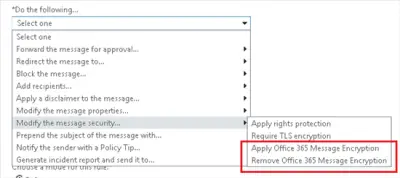Microsoft is introducing a message encryption mechanism to Office 365. The service is named as Office 365 Message Encryption, and it will be made available in the first quarter of 2014. This feature offers a higher level of encryption that will cut the odds of any eavesdropping. The service can be used to send emails to any email network, be it Outlook, Gmail, Yahoo, or something else.
Office 365 Message Encryption Service
Office 365 Message Encryption Service can find use in making your business communication and other sensitive interactions between you and the bank, healthcare, loan care and other places confidential.
It is no secret that our online activities, especially our private conversations are not really private on the web. Past 5 months have changed the way we used to think about our privacy and made us aware of surveillance organizations like NSA. A hoard amount of encryption tools and services have cropped since. This makes it clear how much people value their privacy.
Office 365 message Encryption is an uplift to the Exchange Hosted Encryption (EHE), a service that provides high level encryption and eliminates the need of certificates from the user-end. The E3 and E4 subscribers of the Office 365 will get this feature for free, other users might have to pay $2 per month to be able to use this feature.
Setting up the service is also very easy. The admin can choose whether to add the encryption feature or delete them. If the encryption has been set, the message will be encrypted before it delivers to any other email server.
Microsoft hasn’t elaborated the pricing very clearly. We will update this post when we receive more information.

How will the e-mail recipient be able to decrypt the message?
Hi Thomas, thanks for asking this question. Recipient gets a regular looking email, with an encrypted attachment. Upon clicking on that attachment file, it fires up the browser and asks for recipient’s Office 365 ID or Microsoft Account to check for authentication.
Thanks for your reply. So this is only usable if both, the sender and the recipient, use a Microsoft account and/or Office 365. That is a problem, too, as I send mail to many different people which are using different e-mail-provider.
It does seem ironic to me. On one hand Microsoft is telling you that you can send encrypted message to any email service, and on another the recipient is being asked for an Outlook or Microsoft ID for authentication. I will ask Microsoft representative to make this point clear.